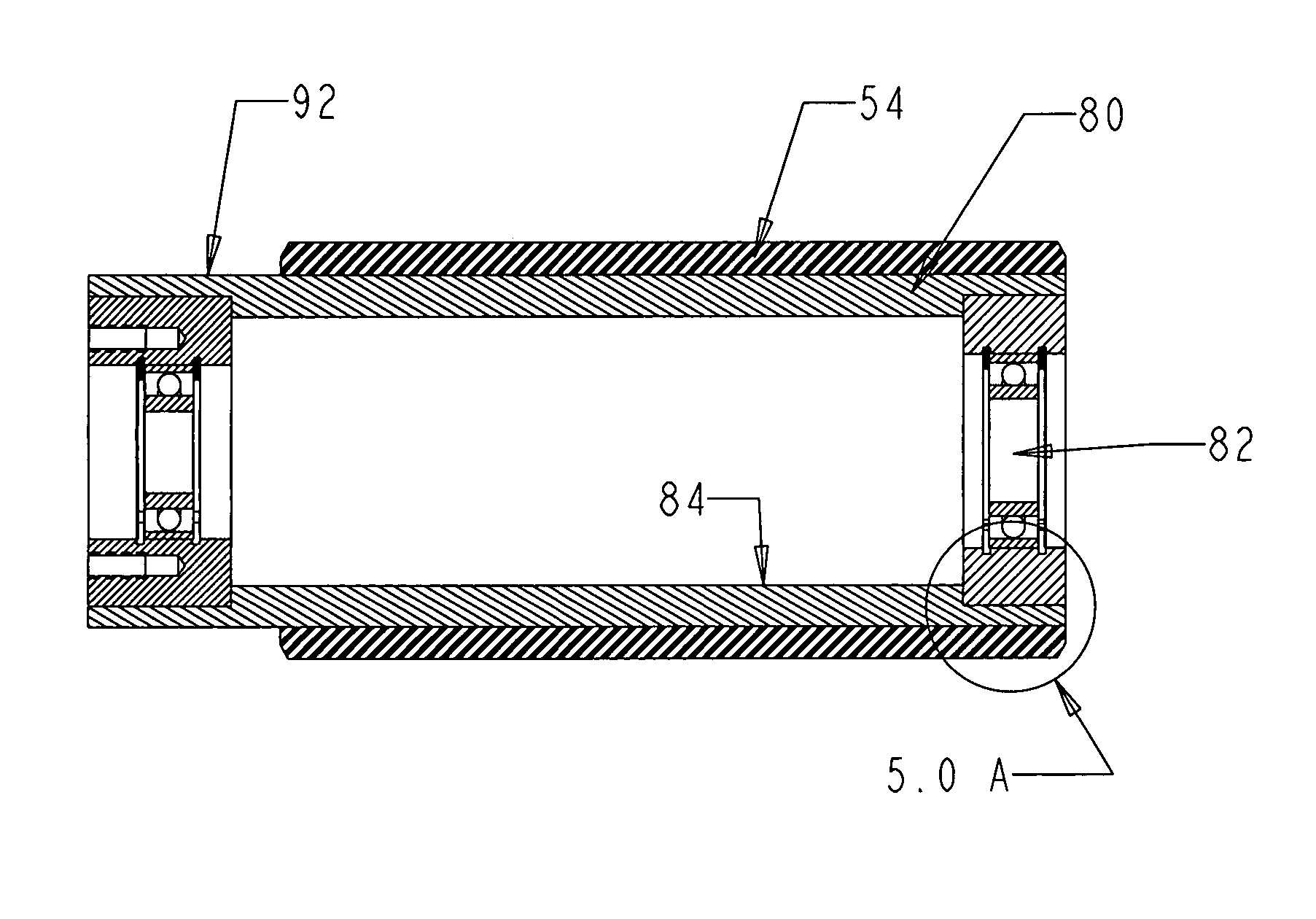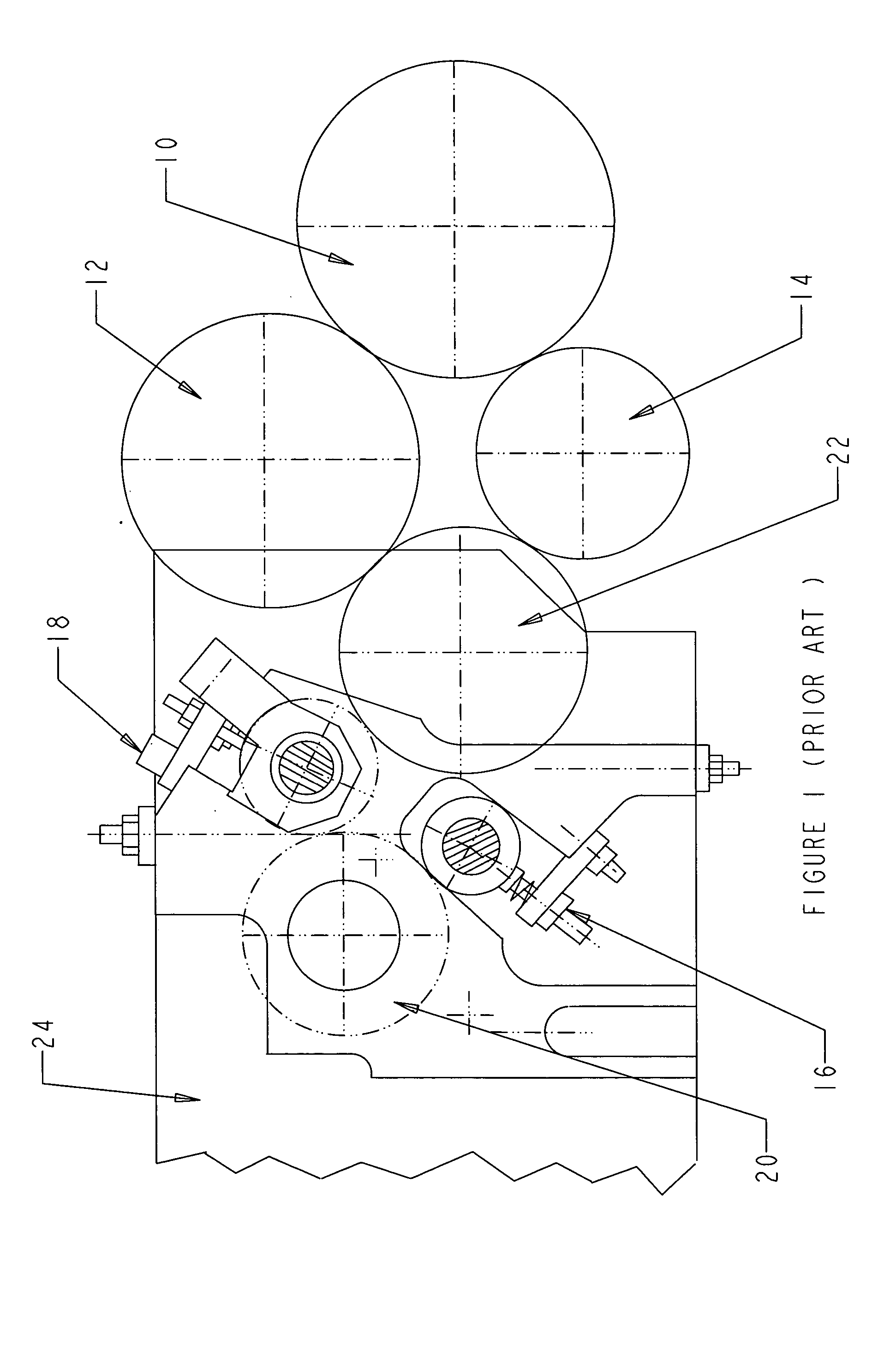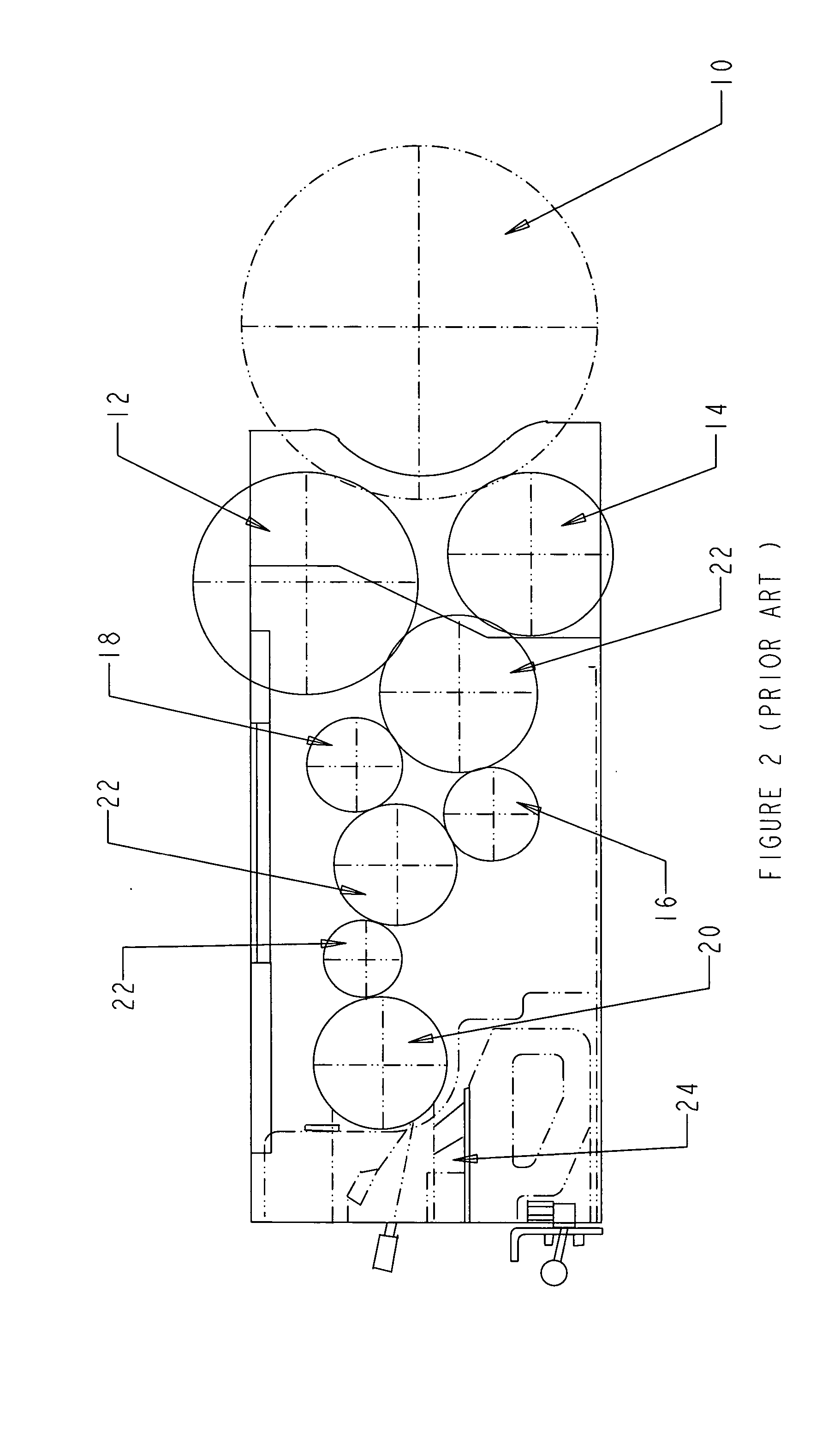Disposable printing roller
- Summary
- Abstract
- Description
- Claims
- Application Information
AI Technical Summary
Benefits of technology
Problems solved by technology
Method used
Image
Examples
Embodiment Construction
[0037] Referring to the Figures and more specifically FIGS. 6, 7 and 7A, the invention consists of a hollow core 50 made from a strong and inexpensive metal with the preferred embodiment being steel. The hollow core 50 may also be made out of aluminum. The hollow core 50 is cylindrical in shape and has an inner diameter and an outer diameter. There is an opening at each end of the hollow core 50. The hollow core 50 has an inside surface 70 and an outside surface 56. The hollow core 50 is cut to a desired length depending on the printing roller requirements.
[0038] The invention also consists of two end caps 52 that are designed to work in conjunction with the hollow core 50. There is a right end cap and a left end cap. Referring to FIG. 8 the end cap consists of a protrusion 62, a flange 64, an extension 66 and a journal 68 containing a slot 72. The protrusion 62 has an outer surface 90 and is specifically designed to engage with the inner surface 70 of the hollow core 50. The flang...
PUM
 Login to View More
Login to View More Abstract
Description
Claims
Application Information
 Login to View More
Login to View More - R&D
- Intellectual Property
- Life Sciences
- Materials
- Tech Scout
- Unparalleled Data Quality
- Higher Quality Content
- 60% Fewer Hallucinations
Browse by: Latest US Patents, China's latest patents, Technical Efficacy Thesaurus, Application Domain, Technology Topic, Popular Technical Reports.
© 2025 PatSnap. All rights reserved.Legal|Privacy policy|Modern Slavery Act Transparency Statement|Sitemap|About US| Contact US: help@patsnap.com



